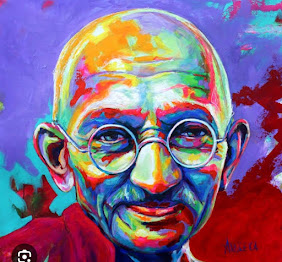The History of Kabaddi, the Tamilnadu game. கபடி வரலாறுதமிழர்கள் வீர விளையாட்டு
The History of Kabaddi
Origins and Early Development
Kabaddi is a traditional Indian sport that has its roots in ancient history, with references found in various texts and folklore. It is believed to have originated over 4,000 years ago, with possible connections to the military training of young warriors who practiced the sport to build strength and strategy. The sport combines elements of tag and wrestling, requiring agility, strength, and strategy.
The name "Kabaddi" is derived from the Tamil word "kai-pul," which translates to "to hold hands." The game has variations across different regions of India and South Asia, each with its unique set of rules. Kabaddi has been played in different forms in various states, including Maharashtra, Punjab, and Tamil Nadu, each contributing to the sport’s evolution.
Evolution in the 20th Century
Kabaddi remained largely a local sport until the 20th century when it began to gain more organized recognition. The All India Kabaddi Federation was formed in 1952, and the first national championship was held in 1953. This laid the foundation for formal competitions and helped standardize the rules of the game.
The sport's popularity increased with the introduction of state and national level tournaments. In 1980, Kabaddi was included in the Asian Games, providing a significant platform for its exposure. The sport was showcased prominently, contributing to a growing interest in both players and spectators.
The Turn of the Millennium
By the year 2000, Kabaddi had established itself as a prominent sport in India. The decade marked a significant shift, as various leagues and tournaments began to emerge, leading to a more structured approach to the game. The Kabaddi World Cup was introduced in 2004, further highlighting the sport on an international level.
In 2000, Kabaddi was primarily played in its traditional formats. It included both outdoor and indoor variants, with "Circle Style" being popular in rural areas and "National Style" being played in more urban settings. The sport was predominantly male-dominated, but women's Kabaddi began to gain traction, with state-level tournaments encouraging female participation.
Popularity Surge and Professional Leagues
The 2000s witnessed a dramatic increase in Kabaddi's popularity, culminating in the launch of the Pro Kabaddi League (PKL) in 2014. This league revolutionized the sport, introducing a franchise-based model similar to other professional leagues in India, such as the Indian Premier League (IPL) for cricket. The PKL attracted significant sponsorships, media coverage, and a larger audience, which contributed to the growth of Kabaddi across the nation.
The league’s format and exciting matches garnered attention from diverse demographics, turning Kabaddi into a household name. This period also saw the emergence of several star players, who became icons of the sport and helped promote Kabaddi on various platforms.
Kabaddi in International Arena
The rise of Kabaddi was not limited to India; it expanded its reach to several other countries, including Pakistan, Bangladesh, and Iran. International tournaments and matches helped establish Kabaddi as a competitive sport globally. The Asian Kabaddi Federation played a crucial role in organizing events and promoting the sport in Asia.
The Kabaddi World Cup, first held in 2004, saw participation from countries like India, Pakistan, Iran, and Sri Lanka. India dominated the World Cup, winning multiple titles and showcasing its prowess in the sport. The World Cup helped further popularize Kabaddi on an international level and fostered a spirit of competition among nations.
Cultural Significance
Kabaddi is more than just a sport; it holds cultural significance in various regions of India. Traditionally played in rural settings, it is often associated with community gatherings and celebrations. The game promotes teamwork, physical fitness, and strategic thinking, making it an integral part of community life.
In recent years, Kabaddi has been featured in various media, including films and television shows, which has contributed to its growing popularity among younger generations. The sport is often portrayed as a symbol of strength and resilience, reflecting the values and traditions of Indian culture.
Conclusion
From its ancient origins to becoming a globally recognized sport, Kabaddi has undergone significant transformations. The year 2000 marked a period of transition, laying the groundwork for its future development and popularity. The establishment of leagues and international competitions has propelled Kabaddi into the limelight, ensuring its place as a key player in the sports arena.
Today, Kabaddi continues to evolve, attracting new players and fans while preserving its rich history and cultural heritage. As it moves forward, the sport is poised to reach even greater heights, fostering a sense of community and competition among its players and supporters.
"This Content Sponsored by Genreviews.Online
Genreviews.online is One of the Review Portal Site
Website Link: https://genreviews.online/
Sponsor Content: #genreviews.online, #genreviews, #productreviews, #bestreviews, #reviewportal"




Comments
Post a Comment